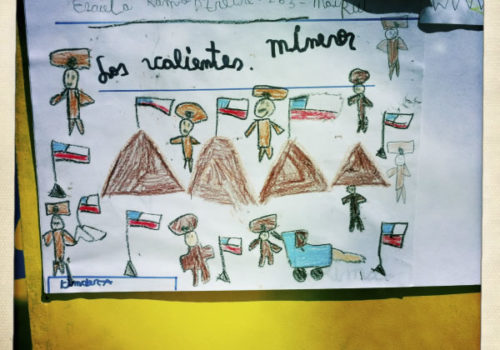Born in Puerto Montt in 1971, Roberto Candia lives and works in Chile. He has been working as a photojournalist for various newspapers and magazines since 1991 and joined Associated Press in 1998. He was voted Chilean photographer of the year in 2010 and won the 2011 Photo of the Year (POYi) prize in Latin America.
Between 5 August and 13 October 2010, thirty-three Chilean miners were trapped at the bottom of the San José copper mine. For two months, up to the moment the miners were rescued and brought back to the surface, the media coverage grew and grew, especially after it was learnt that they were alive.
Along with hundreds of other photographers, Candia was on the spot as soon as the rescue attempts began. We can well imagine the long, long wait by the men’s families, camping close to the pit in the inhospitable environment of the Atacama Desert.
To capture the full strangeness of the situation, Candia used his cell phone to photograph the trivial objects and other signs that symbolised the waiting process and the families’ anxiety as time dragged by and the outcome remained uncertain.
Plan B – the second rescue attempt, which proved to be successful – used a special capsule to extract the miners. Candia’s personal plan B was the cell phone and an application that turned it into an instamatic, producing square, low definition images with altered colours.
Drawing on thirty-three images captured during the wait, the photographer assembled thirty-three fragments, among them cranes, the journalists’ observation deck, children’s drawings, good luck cards, the morning light and paths winding out into the desert. Candia offered another vision of things, a narrative that avoided the over-dramatic. This break with his usual way of working resulted in an idiosyncratic coverage of the period between the announcement of the collapse and the ultimate exit of the miners.
Christine Barthe, curator
Text from the catalogue-book “Photoquai”, co-edited by Musée du Quai Branly- Actes-Sud
















